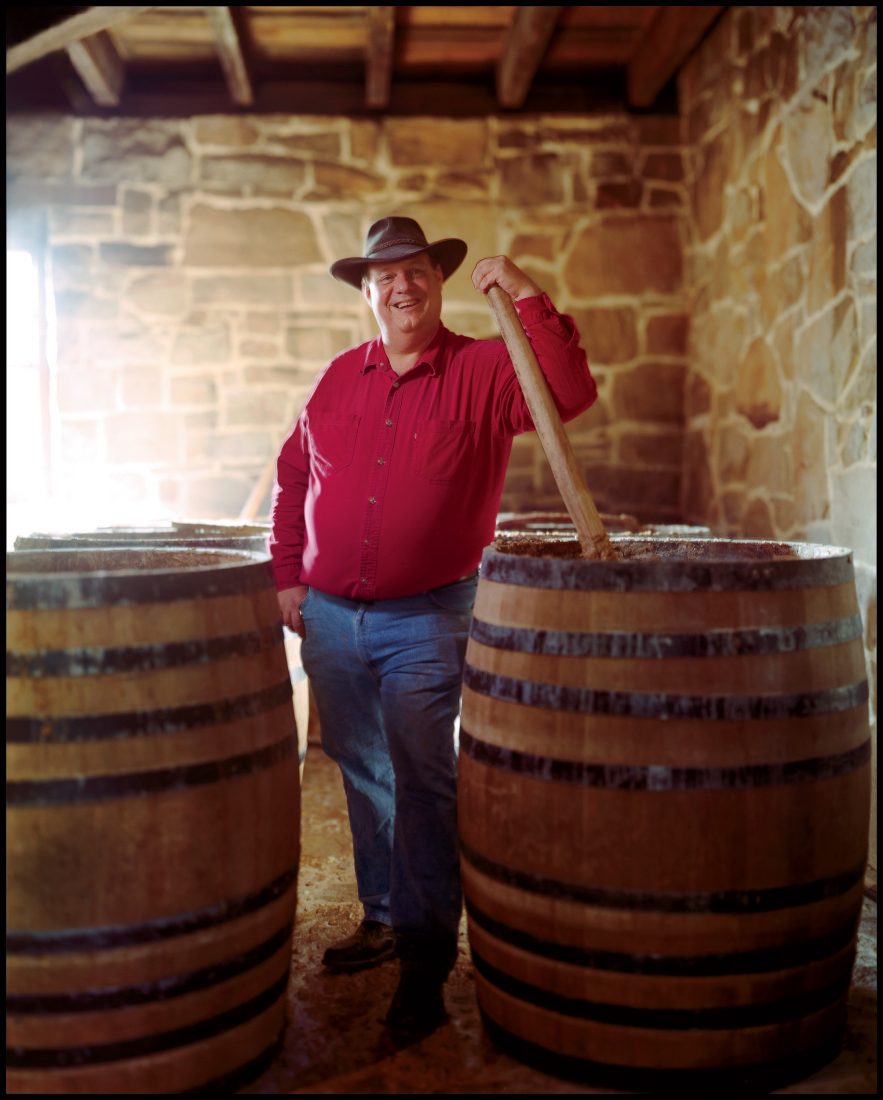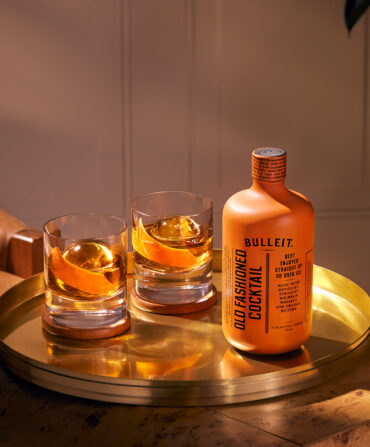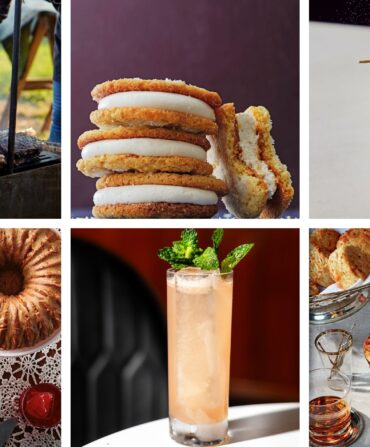Think of Dave Pickerell as the Johnny Appleseed of American whiskey. After fourteen years as the master distiller at Maker’s Mark, he left in 2008 to become a consultant for the burgeoning craft-distilling movement. Since then Pickerell, who is based in Louisville, has worked with many of the leading names in the business, including Corsair, Hillrock Estate, and George Washington, the newly reopened distillery at Mount Vernon—and become one of the preeminent figures in modern whiskey.
Unlike many top whiskey makers, who learned the business at the feet of their fathers’ stills, Pickerell wasn’t born with a bag of rye in his hand. A native of Fairborn, Ohio, he went to West Point on a football scholarship and later got a master’s degree in chemical engineering from the University of Louisville. More than three decades later, he is on the road almost every week, working with clients from northern Minnesota to northern Florida. In the process, Pickerell is not just making a name for himself; he is helping make craft distilling the next big thing in American spirits.
You had a pretty plum position at Maker’s Mark. What made you want to set out on your own?
When I started with Maker’s Mark, it would have qualified as a craft distillery. Today it’s producing about 1.3 million cases a year. I engineered all of that, as well as the current expansion that I believe they’re doing now. So all those big challenges had been met. And I saw this craft world coming up, and a lot of people needed help, and a lot of those areas are where I could help.
Since 2008, American whiskey has taken off, what with the expanding number of artisan distilleries and the return of rye to popularity. What’s behind the boom?
Go back to previous trends. First was food. That goes from executive chefs with their name on the door to the popularity of local products. Now it’s drinks and cocktails. Taste is becoming important. That’s why vodka is, I think, on the decline. Terroir is becoming important. People also want historic things, authenticity. And the fact is, the first American cocktails had rye in them. The whiskey rations during the Revolutionary War were in rye. If you want to be authentic, you need rye on the bar.
Speaking of rye, you have a tattoo of George Washington’s rye still on your arm.
When they threw the tea into Boston Harbor, it wasn’t just throwing tea, it was throwing the British way of life, and that included rum, which had been the colonial drink. That didn’t mean they were going to quit drinking, it just meant they were going to switch to something made indigenously, and that was rye whiskey. And George Washington was one of the biggest rye whiskey makers of his era.
So how did bourbon become so beloved across the South?
Because that’s the way the South was settled—from Kentucky, Tennessee, and Virginia. Look at the state of birth of the people who fought in the Alamo. Many of them were from Kentucky and Tennessee. Bourbon got its name when it was shipped from Bourbon County, Kentucky, to New Orleans. It was easier to get on the western side of the Appalachian Mountains in the early years. Bourbon really was the frontier whiskey. That’s why the South identifies with it more.
Last fall, someone stole $26,000 worth of 20-Year-Old Pappy Van Winkle bourbon from a warehouse in Kentucky. Were you surprised?
The black market value on Pappy Van Winkle is ungodly. So I can understand why someone would take the risk. It’s one thing to say it’s $26,000 of whiskey. But if you look at the black market value, it’s at least five times that.
Do you think Pappy is worth the hype?
I’m torn. I think it’s cool that people are that interested. My personal opinion: I refuse to look up the value of any bottle in my collection. It’s not there to be collected; it’s there to be enjoyed. But am I going to go buy a $5,000 bottle of Pappy? No.
Is there a right way to drink whiskey?
The wrong way to do it is the way someone else tells you to if you don’t like it. But I always tell people, give the native spirit a chance. Take a shot neat, because that’s the way the distiller put it in the bottle. Then have fun. Add a splash of water to see if it opens up, or an ice cube. But don’t shy back from a cocktail if you like a good cocktail.
Most people think of whiskey as a winter-only drink. I’m guessing you disagree.
Indubitably. As a matter of fact, I invented a cocktail just for bourbon lovers to have in the summer. It’s called the Summer Breeze. Take a whole orange wheel, and add a splash of Cointreau. Muddle it really well. Tear that orange up into the Cointreau. Then add equal parts bourbon and ginger ale, throw in a little ice, give it a quick stir, and you’re done.
You travel all over the country. What keeps you rooted in Louisville?
Louisville is hometown America. The cost of living is great. Culturally they have everything. And the food—you’d never think it was a place for fresh-catch seafood, until you realize that UPS’s international hub is there, so all that same-day fish is getting flown through Louisville. There’s a great bar scene. What’s not to like? I’ve lived there for thirty years and only been stuck in traffic once.








